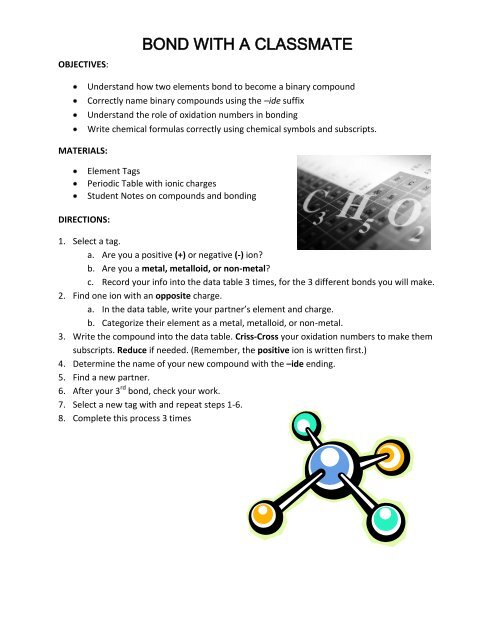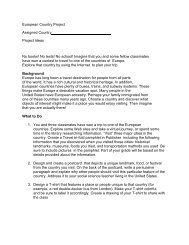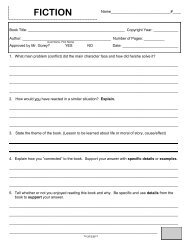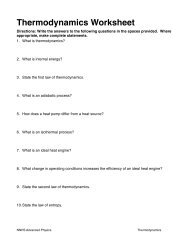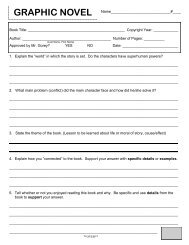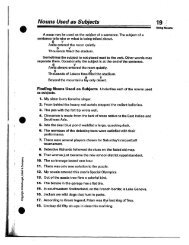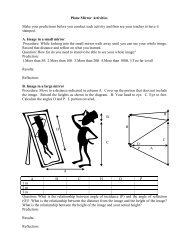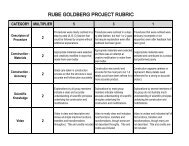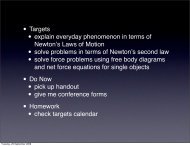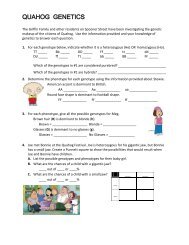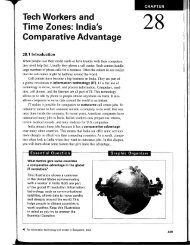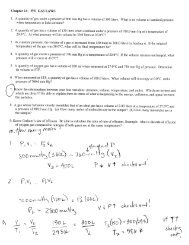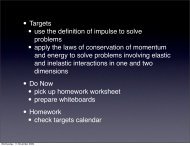You also want an ePaper? Increase the reach of your titles
YUMPU automatically turns print PDFs into web optimized ePapers that Google loves.
<strong>BOND</strong> <strong>WITH</strong> A <strong>CLASSMATE</strong><br />
OBJECTIVES:<br />
MATERIALS:<br />
DIRECTIONS:<br />
Understand how two elements bond to become a binary compound<br />
Correctly name binary compounds using the –ide suffix<br />
Understand the role of oxidation numbers in bonding<br />
Write chemical formulas correctly using chemical symbols and subscripts.<br />
Element Tags<br />
Periodic Table with ionic charges<br />
Student Notes on compounds and bonding<br />
1. Select a tag.<br />
a. Are you a positive (+) or negative (-) ion<br />
b. Are you a metal, metalloid, or non-metal<br />
c. Record your info into the data table 3 times, for the 3 different bonds you will make.<br />
2. Find one ion with an opposite charge.<br />
a. In the data table, write your partner’s element and charge.<br />
b. Categorize their element as a metal, metalloid, or non-metal.<br />
3. Write the compound into the data table. Criss-Cross your oxidation numbers to make them<br />
subscripts. Reduce if needed. (Remember, the positive ion is written first.)<br />
4. Determine the name of your new compound with the –ide ending.<br />
5. Find a new partner.<br />
6. After your 3 rd bond, check your work.<br />
7. Select a new tag with and repeat steps 1-6.<br />
8. Complete this process 3 times
<strong>BOND</strong> <strong>WITH</strong> A <strong>CLASSMATE</strong><br />
+ ION - ION COMPOUND NAME<br />
Mg 2+ Cl 1- MgCl 2 Magnesium Chloride


